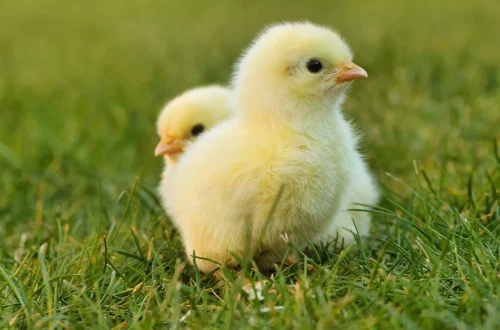
Effective Natural Pain Relief Solutions for Cats
Managing pain in cats can be a daunting task for pet owners. Cats, by nature, are skilled at hiding their discomfort, making it challenging to identify when they are suffering. This instinctual behavior can lead to unrecognized pain, which can significantly impact their quality of life. Understanding the different ways to alleviate pain naturally is essential for every cat owner. Natural pain relief solutions not only help manage discomfort but also promote overall wellness in our feline companions.
With the growing awareness of holistic approaches to pet care, many owners are turning to natural remedies as alternatives to pharmaceutical solutions. These alternatives often come with fewer side effects and can be more in line with a cat’s natural lifestyle. Implementing these solutions requires a holistic understanding of your cat’s needs and health status. However, it’s crucial to approach these remedies with care and to ensure they are safe and suitable for your furry friend.
Whether your cat is dealing with chronic conditions, recovering from surgery, or simply showing signs of aging, exploring natural pain relief options can be a valuable part of their care routine. It is essential to educate ourselves on the various methods available and to consult with a veterinarian before making any significant changes to your pet’s health regimen.
Herbal Remedies for Pain Management
Herbal remedies have been used for centuries to alleviate pain in both humans and animals. When considering herbal solutions for your cat, it is crucial to choose the right herbs that are safe and effective for felines. Some popular herbs known for their pain-relieving properties include turmeric, ginger, and chamomile.
Turmeric, a vibrant yellow spice, contains curcumin, which has anti-inflammatory properties. It can help reduce inflammation associated with arthritis and other chronic pain conditions in cats. You can introduce turmeric into your cat’s diet by mixing a small amount (about a quarter of a teaspoon) into their food. However, it’s essential to consult your veterinarian for the appropriate dosage and to ensure it doesn’t interact with any medications your cat might be taking.
Ginger is another potent herb known for its anti-inflammatory and analgesic properties. It can help relieve pain associated with digestive issues and arthritis. Adding ginger to your cat’s diet can be done by grating fresh ginger or using ginger powder. Again, moderation is key, so speak with your vet before introducing it to your cat’s diet.
Chamomile is well-known for its calming effects, but it also has anti-inflammatory properties. You can offer chamomile tea to your cat as a soothing drink or use it as a compress for painful areas. It’s essential to ensure that the chamomile you use is free from additives and safe for pets.
When using herbal remedies, it’s vital to monitor your cat for any adverse reactions. Some cats may be sensitive to certain herbs, so starting with small amounts and observing your pet’s behavior is advisable.
Physical Therapy and Massage Techniques
Physical therapy and massage are effective ways to provide natural pain relief for cats. These techniques not only help alleviate pain but also improve mobility and promote overall wellness. Cats, much like humans, can benefit from a range of physical therapies tailored to their specific needs.
Massage is a gentle way to ease muscle tension, improve circulation, and promote relaxation. When massaging your cat, focus on areas where they show signs of discomfort. Use light pressure and slow, rhythmic movements. Start with the shoulders and gradually work your way down to the back and legs. Pay attention to your cat’s reactions; if they seem uncomfortable, adjust your technique accordingly.
In addition to massage, gentle stretching can also aid in relieving pain. Encourage your cat to stretch by gently guiding their limbs through a range of motion. This can be particularly beneficial for older cats suffering from arthritis or stiffness. Always be cautious and gentle, ensuring that you do not cause any additional discomfort.
Incorporating regular physical activity into your cat’s routine can also prevent stiffness and promote joint health. Engage your cat with interactive toys or encourage playtime to keep them active. Creating a safe environment where your cat can explore and exercise is vital in maintaining their physical health.
For more severe cases, consider consulting a professional animal therapist who specializes in feline care. They can provide tailored treatments such as hydrotherapy, acupuncture, or specialized exercises designed to alleviate pain and improve your cat’s quality of life.
Dietary Changes for Pain Relief
Diet plays a significant role in managing pain in cats. A well-balanced diet can help maintain a healthy weight, reduce inflammation, and support overall health, which is crucial for pain management. Certain foods are known for their anti-inflammatory properties and can be beneficial for cats suffering from chronic pain.
Incorporating omega-3 fatty acids into your cat’s diet can significantly help reduce inflammation. Fish oil, particularly from sources like salmon or sardines, is rich in omega-3s and can be added to their meals. Not only does it support joint health, but it also promotes a healthy coat and skin. Always consult your veterinarian about the appropriate dosage and type of fish oil suitable for your cat.
Additionally, feeding your cat a diet rich in antioxidants can help combat inflammation. Foods such as blueberries, spinach, and sweet potatoes are packed with nutrients that can aid in reducing pain. However, it’s essential to introduce new foods gradually and to ensure that they are safe for felines.
Consider discussing a specialized diet with your veterinarian, especially if your cat has specific health concerns. A tailored diet plan can address individual needs and help manage pain more effectively.
Regularly monitoring your cat’s weight is also crucial. Obesity can exacerbate pain, particularly in joint-related issues. Maintaining a healthy weight through a balanced diet and regular exercise is essential for overall health and pain management.
Alternative Therapies: Acupuncture and Chiropractic Care
Alternative therapies such as acupuncture and chiropractic care are gaining popularity among pet owners seeking natural pain relief solutions for their cats. These therapies can complement traditional veterinary medicine and provide significant benefits for pain management.
Acupuncture involves the insertion of fine needles into specific points on the body to stimulate healing and relieve pain. This ancient practice can help alleviate pain associated with various conditions, including arthritis, muscle injuries, and post-surgical recovery. It is essential to seek a certified veterinarian who specializes in acupuncture for pets, as they will have the necessary training and experience to perform the procedure safely.
Chiropractic care focuses on the alignment of the spine and joints to improve overall function and reduce pain. Many cats can benefit from chiropractic adjustments, especially those with mobility issues or chronic pain. A qualified animal chiropractor can assess your cat’s condition and provide adjustments tailored to their specific needs.
Both acupuncture and chiropractic care require a commitment to ongoing treatment and monitoring. It’s essential to work closely with your veterinarian to ensure that these alternative therapies are safe and effective for your cat.
While these therapies can provide significant relief, they should be viewed as part of a comprehensive pain management plan that includes diet, exercise, and other natural remedies.
In conclusion, managing your cat’s pain naturally involves a combination of herbal remedies, physical therapy, dietary changes, and alternative treatments. Always consult with your veterinarian before implementing any new treatment to ensure it is appropriate for your cat’s specific health needs.
*Disclaimer: This article is not intended as medical advice. Always consult a veterinarian for health issues regarding your pet.*




